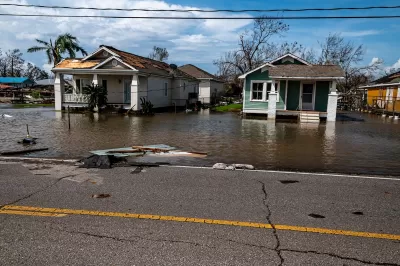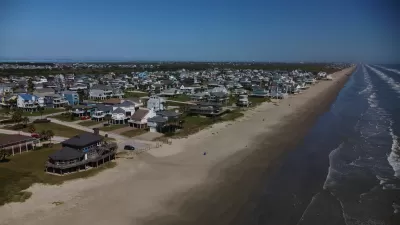Many U.S. cities use ‘routine’ practices like zoning changes and permitting to discourage development in high-risk flood zones.

New research published in the journal Earth’s Future shows that the United States is building fewer structures in floodplains, bucking conventional wisdom that development is running rampant in flood-prone areas, writes Jake Bittle in Grist. A separate paper found that some of the most effective approaches to limiting floodplain development are “routine municipal practices” such as zoning and permitting.
The results reveal that floodplain development is not the intractable problem some have made it out to be. “Developers have built 844,000 units of housing on 2.1 million acres of floodplain — but if they had chosen available parcels at random, they would have built even more than that. This was true for more than 75 percent of all jurisdictions studied, indicating that most governments make at least some substantive attempt to avoid coastlines and riverbanks.”
According to the study, “Indeed, in the 21st century most towns and cities in the U.S. built very little or not at all in flood-prone areas. The vast majority of floodplain construction — the kind that grabs headlines and feeds the pessimistic narrative — has taken place in just two states: Louisiana and Florida.”
Around half of properties that have filed multiple flood insurance claims are in Gulf of Mexico states. “The authors argue that these places need targeted intervention. The state or federal government could provide subsidies to encourage less risky construction, helping offset the economic lure of waterfront construction, or a state could just impose penalties on cities that allow for new builds near the water.”
FULL STORY: The US is finally curbing floodplain development, new research shows

Planetizen Federal Action Tracker
A weekly monitor of how Trump’s orders and actions are impacting planners and planning in America.

Chicago’s Ghost Rails
Just beneath the surface of the modern city lie the remnants of its expansive early 20th-century streetcar system.

San Antonio and Austin are Fusing Into one Massive Megaregion
The region spanning the two central Texas cities is growing fast, posing challenges for local infrastructure and water supplies.

Since Zion's Shuttles Went Electric “The Smog is Gone”
Visitors to Zion National Park can enjoy the canyon via the nation’s first fully electric park shuttle system.

Trump Distributing DOT Safety Funds at 1/10 Rate of Biden
Funds for Safe Streets and other transportation safety and equity programs are being held up by administrative reviews and conflicts with the Trump administration’s priorities.

German Cities Subsidize Taxis for Women Amid Wave of Violence
Free or low-cost taxi rides can help women navigate cities more safely, but critics say the programs don't address the root causes of violence against women.
Urban Design for Planners 1: Software Tools
This six-course series explores essential urban design concepts using open source software and equips planners with the tools they need to participate fully in the urban design process.
Planning for Universal Design
Learn the tools for implementing Universal Design in planning regulations.
planning NEXT
Appalachian Highlands Housing Partners
Mpact (founded as Rail~Volution)
City of Camden Redevelopment Agency
City of Astoria
City of Portland
City of Laramie





























